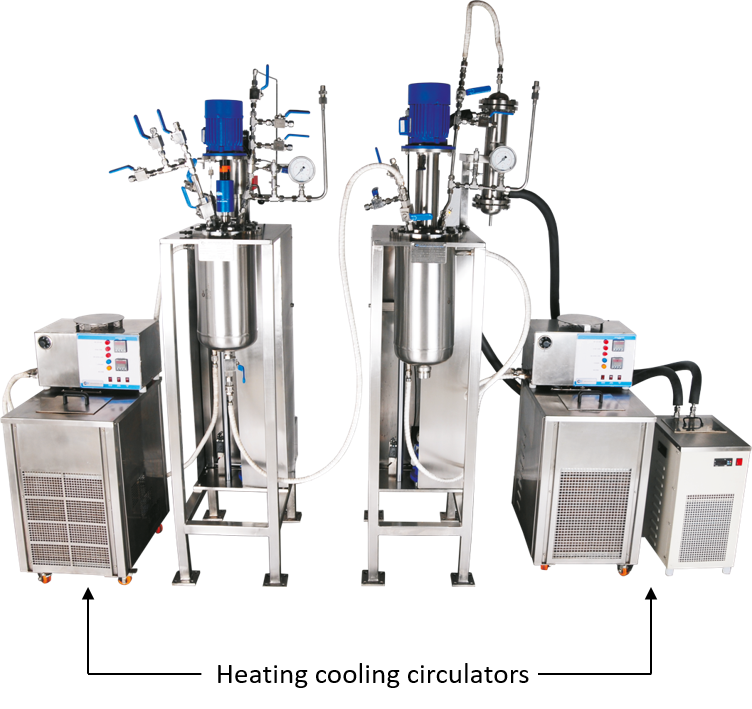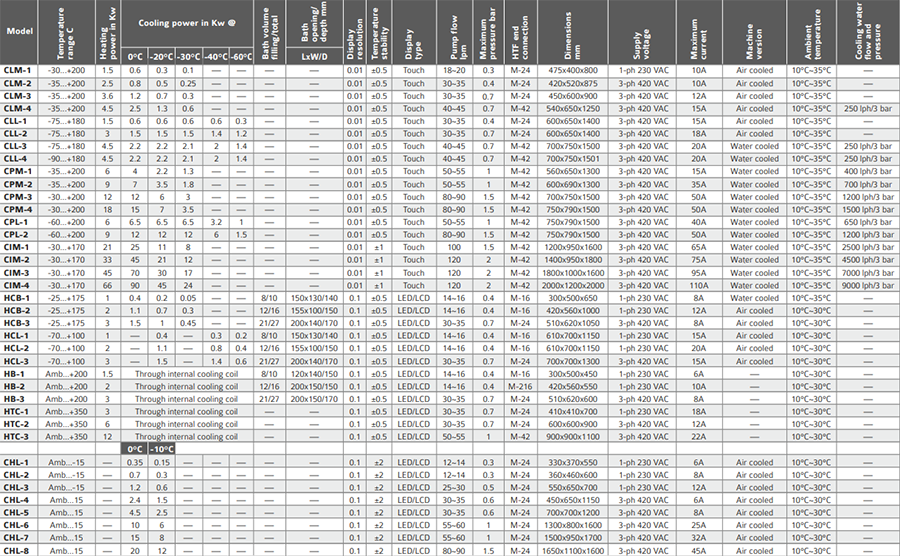Heating cooling circulator systems are today ubiquitous in almost any lab. These are devices used to regulate temperature in laboratory applications. They typically consist of a circulating pump, a heater/cooler unit, and a control system. These circulators provide precise temperature control for experiments, (say) within a range from -90°C to +250°C. They are used for a wide range of applications such as chemical synthesis, material stress testing, biological culture incubation, and physical property analysis. Other niche applications include environmental simulation, semiconductor processing, petrochemical research, and pharmaceutical formulation.
We at Amar have been supplying such systems for many years as part of our pilot plants and custom rigs.

Over time we moved from third-party systems to designing our own heating/cooling circulation systems to support our customers. This leads to more economical solutions and eliminates the interface with one more external vendor for our projects.
This post looks at heating cooling circulators specifically from the viewpoint of our R&D customers from the chemical industry. What are some points to consider when selecting a heating cooling system?
- Temperature Range: Most labs want a versatile system that caters to their usual chemistry. It is good to select a system that goes beyond your current needs of Temperature. For one, heat exchangers work better with a higher delta T so the ability to increase or reduce temperature in the heating cooling circulator gives one more parameter to optimize the process. On the other hand, remember that a wider T-range specification usually leads to more expensive systems. So resist the temptation to specify a range that is too broad.
- Temperature Stability: Most reactions need precise temperature control. If the heating cooling circulator cannot provide a stable temperature your reactor PID controller has to work harder to compensate. This can also lead to inconsistent results for kinetics and batch-to-batch variation in the pilot plant. Stability is harder to judge and needs you to stress test the system or talk to other users with prior experience.
- Heating and Cooling Capacity: Temperature range is often confused with capacity. In theory, you can have a system capable of very high Temperature with a low kW rating. On the other hand, a reaction conducted at even reasonably modest Temperatures (e.g. 80 C) may have a huge capacity requirement if the scale is large. Typically, capacity is related to scale and factors such as specific heat or latent heat. Good calorimetric data is crucial to specify capacity. Even DSC (Differential Scanning Calorimetry) runs will provide some guidance on this number. Some Amar Models of heating cooling circulators are shown below including their capacities.

- Pump Circulation Capacity: The “C” of a Heating Cooling Circulator is determined by pumps. The pump capacity and head are dictated by downstream process requirements. Don’t skimp on pumping rates. A high pumping rate means better heat transfer coefficients and especially with long tubing etc. pressure drops can be large and the pump must provide enough head to push the heat transfer fluid through the system.
- Size and Footprint: Lab space in R&D has often become the most expensive commodity. With HVAC, safety, lighting, and other requirements every square meter of space is expensive. A system that can occupy less space is often a constraint that is hard since a larger system means some other lab equipment needs to be displaced.
- User Interface and Control: Many modern pilot plants are remotely controlled and monitored. The utility must also tie into data acquisition systems. We see customers demand everything from a SCADA system hookup to a DCS system. LAN, USB, and Profibus are some other options available in commercial systems depending on models. The ability to export data to an Excel file is invaluable for subsequent debugging. Some systems incorporate flowmeters that can give you an instant heat balance helping validation at the pilot scale. This data can help you precisely specify the heating loads for the plant scale system to be ordered subsequently. Most users these days demand an aesthetically designed User Interface including touch screens and easy to identify icons.
Stand by for part 2 of this blog post for more discussion on selecting a good heating cooling circulator. Meanwhile do reach out to our experts at Amar info@amarequip.com for selecting the next system for your projects.


